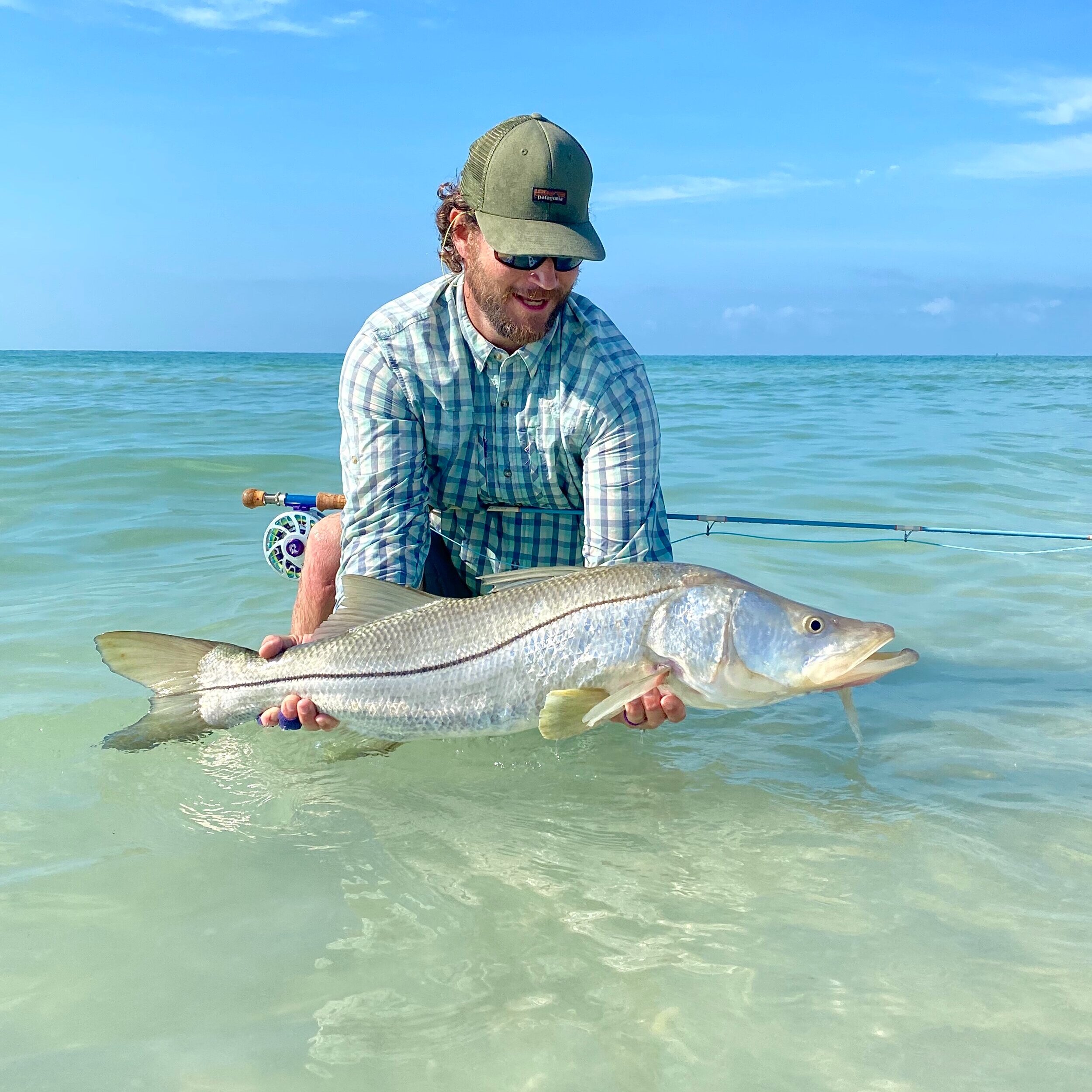Keep Fish Wet: Why do you believe Keep Fish Wet is important ?
Drew Chicone: With the explosion of social media, fishing as a recreational activity and vocation has been irrevocably changed. Without a picture to post, it’s almost as though the day on the water or catching a beautiful fish didn’t happen. With such emphasis on “getting the perfect shot” to post, the fish are often times mishandled, or spend far too much time out of the water. Even if the fish is released afterwards, often times the physical damage or stress to the fish is too much for it to survive. The key to changing this behavior is educating the anglers and photographers on best practices for handling fish and providing examples of awe-inspiring shots that highlight the fish and anglers without harming the fish. Keep Fish Wet is the educational vehicle that will help impart a necessary change throughout the fishing community.
KFW: How do you use KFW principles and tips professionally?
DC: Whenever possible I try to leave the fish in the water while setting up for the photograph. Discussing the shot we are looking to achieve with the photographer prior will also reduce the amount of time the fish is out of the water. Once the boat is in position for the desired background and lighting, the photographer gets into position and then the fish is gently moved into position for the shot. If I’m hosting a trip I explain the same process to the client prior to fishing. We discuss the shots they would like and have a plan in place
KFW: If there was one thing about science-based best practices for fish handling that you wish all anglers would remember or do, what would it be?
DC: Stop holding fish with your fingers in their gills or just by their lower jaws!
KFW: What challenges do you feel anglers face when applying KFW principles and tips?
DC: There are fishing situations where getting in the water for a photo or holding fish over the side of the boat with your hands in the water are dangerous. In these scenarios it’s important to move quickly yet carefully while the fish is out of the water. Preparation is the key to getting a good photo, so do as much as you can to prepare before you begin fishing.
About Drew
Drew Chicone is an author, award-winning outdoor writer and fly designer, photographer, lecturer, and materials expert, whose passion for teaching the art of fly tying has inspired numerous how-to articles, books, and detailed instructional guides. He has lived and breathed the sport since he was tall enough to sit at the vise, and his fly creations are well known and in high demand among saltwater anglers and guides across the globe.
Drew has been a FFF Certified Casting Instructor and commercial fly tyer for more than a decade. He is a designer for Umpqua Feather Merchants and his patterns are sold in quality fly shops and have appeared in over 70 U.S. and international publications. He is the winner of the 2016 and 2017 International Fly Tackle Dealer Best in Show Saltwater Fly Pattern Award, as well as the 2014 I.F.T.D. Iron Fly.
At the beginning of 2018, Drew partnered with Wild River Press books to publish 3 new titles; “Top Saltwater Flies - Bonefish”, “Top Saltwater Flies - Tarpon”, and “Top Saltwater Flies - Permit”. It’s the largest tying-instruction series on the subject ever published. The hardcover set is available for sale at www.topsaltwaterflies.com.
Other Chicone titles include:
Snook Flies 2 (2019)
Redfish Flies 2 (2019)
Largemouth Bass Flies (2018)
Baby Tarpon Flies (2017)
Redfish Flies (2014)
Snook Flies (2013)
Essential Permit Patterns (2013)
Feather Brain: Developing, Testing, Improving Saltwater Fly Patterns (2013)
In addition to his ongoing work as an educator, Drew ties premium saltwater flies for sale through his company: Salty Fly Tying. He is the co-founder of Strip Strike University and frequently hosts destination schools and fishing adventures anywhere saltwater species swim. Drew is an Ambassador for the American Museum of Fly Fishing, Patagonia, CTS, Mavin, Dyna-King, and Bote Paddle Boards. He holds a pro staff positions for Van Stall, Nautilus Reels, Airflo, as well as many other premium fly fishing manufacturers.



